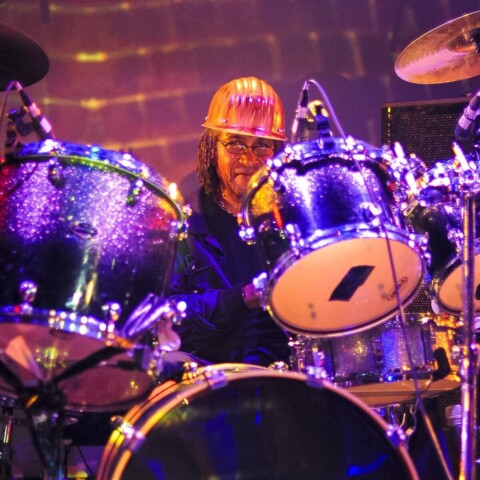$2399
5 Stars
Andrew Baker gets his ears around a Czech-made turntable that gets it right in nearly every way.
THERE ARE A great many affordable – AKA ‘budget’ – turntables out there, many of which I’d be more than happy to spend a great deal of time with. In saying that, it often really can be worth stretching the budget a little further and getting a deck that has had more time, effort and money invested into those all-important areas of noise and vibration isolation – whether this is achieved by using superior and often more expensive construction materials or innovative design techniques, or a mixture of both.
As I sit and write this, the last of the feijoas rotting on the ground outside, wasps in the grapes, trees swathed in autumn colours, leaves becoming crunchy while the skies are grey and growing ever colder, there is no other prospect quite so comforting and appealing as another approaching winter spent listening to records with a good turntable, fire ablaze and slippers on.
I may be getting old, but by no means do I wish to imply that turntables and records are merely to be considered a curiosity for the older crowd, the hipster crowd, or any other stereotype. As you are no doubt aware, the vinyl LP has made something of a comeback these last few years – not that it ever really went away as a format – and the younger crowd are showing surprising and vigorous enthusiasm. Local student radio station, Auckland’s ever-hip 95bFM, recently gave away a glossy new turntable on air with the young female host, barely into her twenties, frothing with excitement (and, as she admitted herself, envy) at the prospect. The competition involved listeners texting in with details of their existing turntables, and there was a considerable response. There is no reason why both analogue and digital sources can’t be enjoyed in one’s system, just as there is no reason for vinyl to be cast back into the smog of nostalgia.
 Many people are happy spinning their records on some old vintage piece and that’s perfectly fine, but there is a slew of fantastic new varieties being made and for any budget – you can get a decent deck for four to six hundy or less – and if you haven’t heard one, you may be missing out. I concede, of course, that many of the classics, especially when modified and customised – such as Garrards, Lencos and Thorens’ – are superb turntables, but with modern advances in technology it really can be worth investing your money.
Many people are happy spinning their records on some old vintage piece and that’s perfectly fine, but there is a slew of fantastic new varieties being made and for any budget – you can get a decent deck for four to six hundy or less – and if you haven’t heard one, you may be missing out. I concede, of course, that many of the classics, especially when modified and customised – such as Garrards, Lencos and Thorens’ – are superb turntables, but with modern advances in technology it really can be worth investing your money.
Build & Features
Which brings us to the new Music Hall MMF7.1, an update on the successful MMF7 model, which sits in about the middle of the range. Music Hall is an American company, dating back to 1985, which prides itself on its focus on 2-channel audio. While their electronics range – high quality amplifiers, DACs, CD players – are made in China, Music Hall turntables are made in the Czech Republic by, according to company founder Roy Hall, a company that has 50 years’ experience making the spinning contraptions. This company also makes turntables for Pro-Ject, and in fact the two brands share certain components; thus, Music Hall uses Pro-Ject arms on its decks.
Indeed, the 2-speed, belt driven MMF7.1 comes mounted with an excellent Pro-Ject 9c carbon fibre tonearm – the MMF5.1, like the original MMF7, has the aluminium version of the Pro-Ject 9 – which is factory fitted with a Music Hall ‘Mojo’ high output moving coil cartridge. The ‘Mojo’ is made specifically for Music Hall by Ortofon and retails on its own for around $800, so while you can purchase this turntable sans cartridge, I think you’d be foolish not to save yourself $300 – unless you already own a super cartridge of course.
The deck itself, finished in luxurious glossy black piano lacquer, is a double-layered plinth design sitting on three adjustable spiked feet. The two plinths are separated by Sorbothane pads or ‘hemispheres’ as a way of isolating everything from noise and vibration which can of course find its way along the tonearm and into that sensitive cartridge. You might also say it’s a suspended deck, of sorts. Also designed with isolation in mind is the arrangement of the 12-volt AC motor. This is a completely separate unit, sitting on its own heavy base within a cut out in the front left corner of the plinth. Music Hall believe siting the motor diagonally opposite the tonearm is a good way of reducing belt-induced vibration from being transferred to the cartridge stylus, any vibration instead being absorbed along the way by the arm. The chunky non-resonant acrylic platter is driven directly by the rubber belt, fitted around the platter’s perimeter via the 33/45rpm pulleys which are located atop the motor for easy speed changes. The main bearing on which the platter sits is stainless steel, and covered in Teflon for noise free movement. [And stick-free cooking? – Ed] A bright blue LED indicates the motor is switched on, in case you didn’t already know by the movement of the platter.
 Along with good quality separate RCA cables, a felt mat is supplied, also a screw-on type metal clamp for keeping those records firmly in place and a spirit level is built into the plinth. Really, you get everything you need to get started: a plastic 45 adapter for those US sourced 7-inch records, a cartridge alignment tool, even a little tool for getting the belt around the platter. Oh, and a dust cover is supplied too. The MMF7.1 is a nice size at 46.4 x 33.7 x 14cm (W x D x H) with the dust cover on and it just feels very well made; sturdy, if a little lightweight, good looking, made to perform.
Along with good quality separate RCA cables, a felt mat is supplied, also a screw-on type metal clamp for keeping those records firmly in place and a spirit level is built into the plinth. Really, you get everything you need to get started: a plastic 45 adapter for those US sourced 7-inch records, a cartridge alignment tool, even a little tool for getting the belt around the platter. Oh, and a dust cover is supplied too. The MMF7.1 is a nice size at 46.4 x 33.7 x 14cm (W x D x H) with the dust cover on and it just feels very well made; sturdy, if a little lightweight, good looking, made to perform.
The 9-inch Pro-Ject Carbon tonearm has bearings made from stainless steel points set in sturdy ring cages, and features adjustable VTA (always handy if you like tweaking), an excellent damped arm lift for easy cuing and the internal wiring is high purity copper. The counterweight is decoupled from the arm, also helping to damp resonances.
As mentioned earlier, the ‘Mojo’ cartridge is made for Music Hall by Ortofon. A high output (3mV) moving coil, the plain black ‘Mojo’ has a user-replaceable nude FG (Fritz Gyger) 70 diamond stylus with a tracking force range of 1.25 – 1.75 mN and frequency response of 20 – 30000 Hz. The cartridge comes already fitted and aligned, ready to be used.
Setting Up
The MMF7.1 came so well packaged – almost everything separately arranged – that I had to photograph every point of the unpacking procedure, just to be sure I’d get it all packed away properly to be sent back to the supplier. Believe me this was necessary – no matter how simply something is packed I always end up with a spare piece that just won’t go back in.
Although they say the MMF7.1 is ‘plug’n’play’ this is a little misleading. Before the initial set up and assembly, you’ll need to remove the three transport bolts from the plinth before installing the platter. Once the turntable is assembled – and this does require a little time be set aside – and in place (and level) the counterweight is put into position and the arm needs to be set up for cartridge tracking force by balancing – or zeroing – the tonearm so it floats parallel to the platter and then setting the tracking force scale appropriate to the cartridge. (Note: the Instruction manual gives information on setting up with a Goldring Eroica cartridge but a quick Google will give you all the info you need for the Mojo. Lastly, fit the anti-skate weight. Don’t worry, the manual is excellent – with easy to follow step-by-step instructions. I doubt you’ll go wrong.
Because the Mojo is a high output moving coil at 3mV it’ll work in most MM phonostages, which is another bonus.
Listening
In no time at all it was obvious that I was in the presence of an extremely competent and superb sounding turntable. Listening to Hot Chip’s dance floor indie-electro-pop LP The Warning, I was impressed with the expansive soundstage in which synths, samples, bass and percussion were presented with lovely, clearly defined textures and detail. There was a real focus and clarity you just don’t often get with cheaper decks and adding to that some pretty exceptional rhythm and timing abilities resulted in a lively listening experience. I was also struck by the super silent background – silent to a level I’d normally associate with high quality digital sources. This allowed the music to have real presence and atmosphere and no doubt aided the delivery of that crystal clear sound.
When I looked up the Mojo cartridge for a bit of research I found a few websites where one or two people commented on it having a bright sound, even after a period of burn in, but this was categorically not my experience. In my system I found the Mojo well-balanced tonally, contributing greatly to the overall sound of the turntable package – so much so that I reiterate my assertion that you’d be ill-advised to buy the MMF7.1 without it.
Music is an emotional and and evocative experience, and the MMF7.1 proved to be an ideal vehicle with which to allow music to stimulate those emotions, with its excellent rhythmic performance and masterful handling of tempo shifts, tones and timbres. It allowed me to really experience music on many levels rather than merely hearing it; a great feat for a relatively modest-priced piece of equipment. I was taken a step further into the venue for Nanci Griffith’s live One Fair Summer Evening, whereI could perceive minor details like breaths, the darkness of the room and even, somehow, the attentiveness of the audience. There also seemed to be a bit more richness to the vocals, which perhaps made them sound a little more confident, rather than the somewhat more delicate delivery I’m used to.
And when the dreamy title track from Om’s phenomenal album Pilgrimage (Southern Lord vinyl reissue) ended, to be abruptly followed by ‘Unitive Knowledge Of The Godhead’ with thunderous bass and kick drums, I was jolted by fright, despite already knowing what was going to happen. Even my wee dog, curled up next to me on the couch, leapt up, startled from her woofy reverie. If I may be picky, I did feel that as a whole the Om tracks did come across a little on the polite or over-polished side which, for me, took some of the grainy doom away from the music. Even that ominous bass line seemed a bit… I don’t know… less ominous? But despite this I thoroughly enjoyed what was on offer and the feeling, the passion and the purpose of the music was still plainly apparent.
Spurred on by the Music Hall’s wonderful display of rhythm and groove I had to give an old faithful a blast: and so onto the platter went Count Basie’s blues-tinged swinging jazz masterpiece Basie Jam (Pablo Records) which proved quite a treat. The music that sprang forth was nicely balanced through the frequency range – and this record can sure give those frequencies a good run – with great rhythmic energy and dynamics. The double bass had good authority, driving the beat along while Basie delivered the goods with twinkling flourishes on his piano and dramatic intent on organ. Saxophones and trumpet were vibrant and colourful, really working through the senses as the guitar chugged away warmly, filling in the gaps. I noticed there was a great sense of depth and separation around the musicians, allowing me to concentrate on any one performer and their individual signatures and nuances. Louie Bellson’s drum solo at the end of ‘Red Bank Blues’ had good speed and reasonable sense of scale, though the fury of his drumming became a little blurred where I can usually hear and distinguish individual strikes and rolls of the sticks. It was still a darn fine effort from the MMF7.1, which overall gave a stellar presentation.
The MMF7.1 has that true analogue character vinyl enthusiasts love – in terms of timing and rhythm – but it is not a warm-sounding turntable. The treble is clear and detaile, not bright with the ‘Mojo’ cartridge as I mentioned earlier, while the midrange is clean and open, portraying warmth only where there is warmth in the recording and the bottom end generally has good weight and impact. I noticed no problems with wow or flutter or any other unwanted noise during the course of the review.
Any major negatives, then? There is some fairly stiff competition – from Pro-Ject’s own turntable packages and Rega’s RP6, for example (and I do love a Rega arm) – but I think the Music Hall MMF7.1 really holds its own in being a worthy consideration. Perhaps it can be a trifle too smooth across the board for my usual tastes – of course this is more a personal preference than a fault of the equipment – and I suppose the blue LED on the motor can be a little bright in the dark, but that’s really picking at the nits. I think any negatives for this or, for what it’s worth, any component of this quality are likely to come down to – as I said before – personal preference.
Conclusion
Build quality is top-notch and the MMF7.1 is super friendly to set up, use and enjoy music with. I know it’s clichéd to say so – and there are some who have it that we hi-fi reviewers are full of clichés anyway – but to get a significantly better digital player you really would have to spend more than average. This Music Hall deck expands on the fun factor of a good low budget turntable by adding a real audiophile experience – that expansive, illuminated sound has another level of detail retrieval, better dynamic delivery and bass extension/definition. And of course that silent noise floor, exquisite rhythm and lower-limb-moving speed of delivery really sweetens the pudding.
Obviously, the ‘Mojo’ cartridge and Pro-Ject Carbon tonearm must be given some of the credit for the overall performance, but the MMF7.1 provides an excellent – if not perfect – platform on which they can go about their estimable business. Music Hall have gone all out to deal with resonance issues and it really seems to have paid off.
This is an excellent package for the first time buyer, the up-grader or anyone who loves music. A perfect way to spend those wintry months – or any other month for that matter. ANDREW BAKER
















Currently have the music hall mme 5.1se
and absolutely love the sound with the mojo cartridge. Have been more than pleased with the performance since the day it was set up.
why did you describe the mojo cartridge as MC (moving coil) when clearly it isn’t